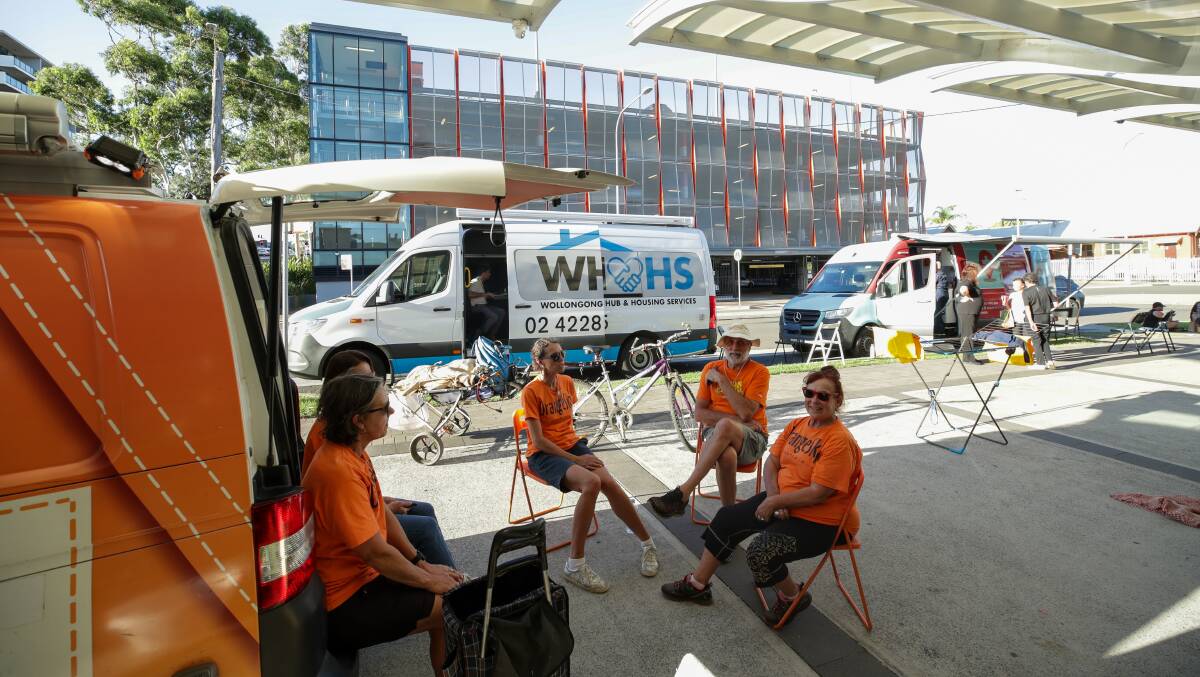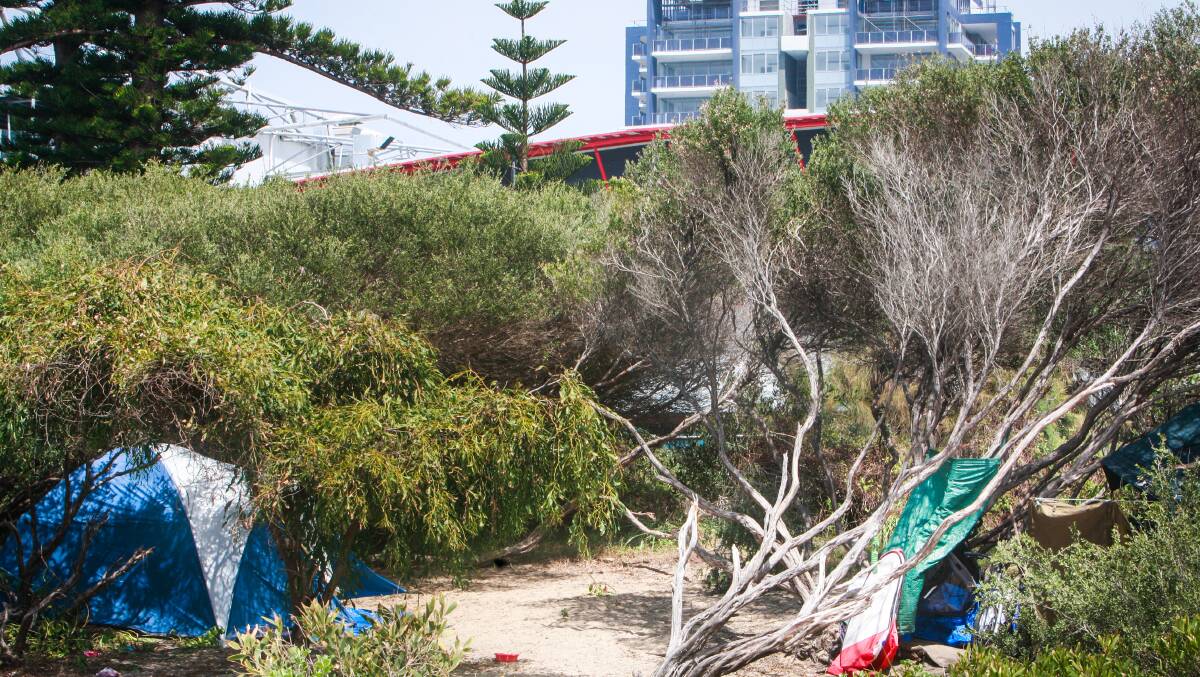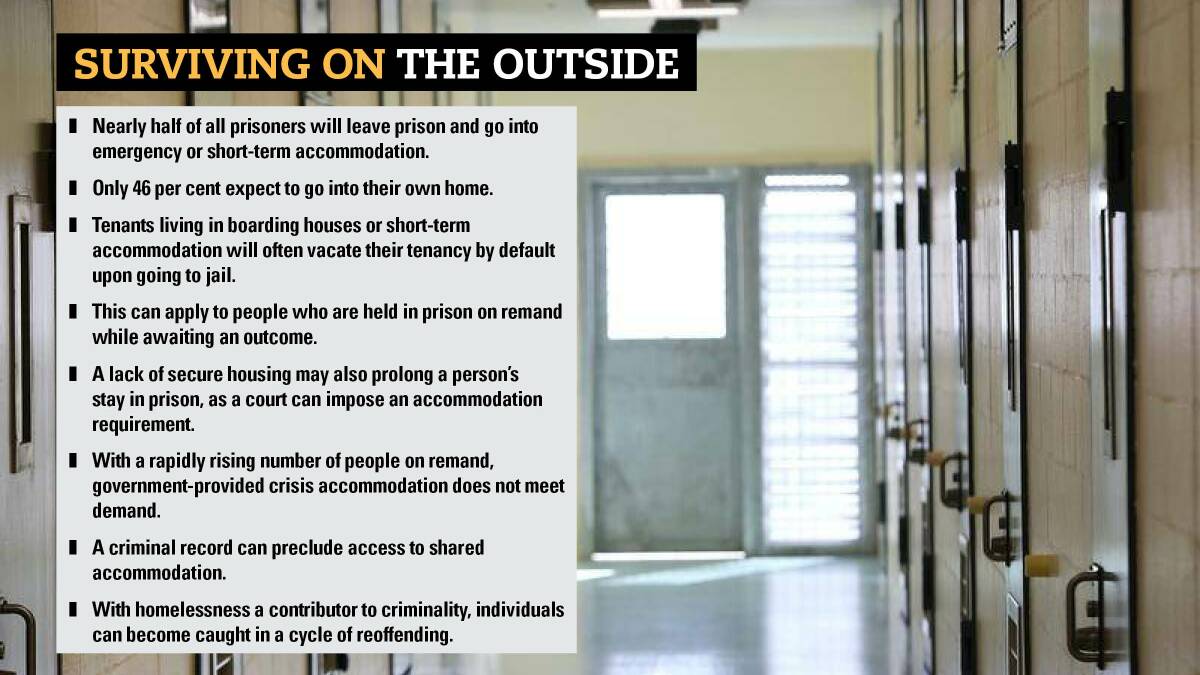
At about 5.30pm on Thursday night, the doors open.
Subscribe now for unlimited access.
$0/
(min cost $0)
or signup to continue reading
"Steak sandwiches with Big Mac sauce!"
That's what's on the menu tonight at Wollongong's Lighthouse Church and about 20 people shuffle inside, to have this night's special plus cordial, tea, coffee or hot chocolate.
Outside, surrounding the entrance to the church just near Wollongong train station, a trio of vans are arranged like a Western caravan and, for the past half-an-hour or so, dinner guests have moved between each, getting their laundry done, having a check-up with a nurse and checking in on housing applications.
Some are regulars, but Wollongong Homeless Hub counsellor Megan Arthur spots someone she hasn't seen in a while and makes a beeline.
Jane* has run out of time in temporary accommodation and a debt from 20 years ago makes it difficult to move back into public housing.
At the moment, she is couch-surfing between friends' places, and Ms Arthur is hoping to ensure she doesn't end up back on the street.
Jane is one of more than a dozen people who the Homeless Hub team will see every day at the pop-up, drop-in centre outside the Lighthouse Church.

Operating out of a purpose-built van, the service connects those living rough with housing services - both those run by the organisation itself and government-provided social housing.
Launched last year, the van hops between various sites in the Illawarra, four days a week, and Homeless Hub CEO Mandy Booker said more people are turning up each week.
"We see approximately 15-20 people a day, and that is increasing."
Using a laptop on a small, fold-out desk, outreach workers such as Ms Arthur work with those who show up to help put a roof over their heads.
"If they're currently sleeping rough, they're linked to accommodation services for crisis accommodation, as well as looking at what their current financial status is," Ms Booker said.
"If they need food support, we will provide food and toiletries as well."
The Illawarra is currently in the grips of a housing crisis, with the pain particularly felt by renters on low incomes.
Rents have risen by up to 40 per cent in some suburbs of the Illawarra - which has the most expensive rent of any region in NSW, above Sydney - and a vacancy rate below one per cent.
"It's at crisis levels, it's really the worst it's ever been. The low rental vacancies are just catastrophic," Ms Booker said.
"We've never seen anything as bad as it is now."
"The people that were already in crisis and at critical levels are now even more vulnerable than ever."
To address this rising demand, the charity has shifted from opening during business hours to being present when the need is most acute.
In the van, Ms Arthur connects people of all ages and backgrounds with the Department of Communities and Justice and not-for-profit organisations providing short-term accommodation.
For those already in social housing, Ms Arthur and the team help them address issues such as mould, abusive neighbours and NDIS paperwork.
Many of the people who visit the van have complex needs that add to their housing challenges.
"A gentleman has been evicted from his property, he's been given 10 days notice, but his affordability is $240 a week, and there were five properties today across the entire Illawarra that were under that amount," Ms Arthur said.
"They were all shared accommodation, and he has some really complex health and medical needs, which makes that not suitable for him.
"The fact that there isn't any standalone accommodation within the affordability of somebody on a JobSeeker payment across the Illawarra is quite a significant issue."

Out of prison with nowhere to go
Jane has experienced this first hand. As an Indigenous woman living with a disability, she has been on the public housing waiting list since 2018, when she moved back to NSW after living in Queensland.
Because Jane had a small debt owing to the Department of Housing from a tenancy 20 years ago, she will need to either pay it off or work it off to be able to secure a public house.
Meantime, she can only spend so long in shelters and temporary accommodation.
"Once you're in temporary accommodation, you've got to go and look for rentals, which is hard because you haven't had any rental history, or anything like that," she said. "It's really hard."
A quarter of the people assisted by the Homeless Hub have left a correctional facility in the past six months.

"Systemic failures are happening and we need to do better in regards to linking up with preventative measures for people not to be incarcerated," Ms Booker said.
"But also then after they've been incarcerated, so that we ensure that we capture them at the other end so they can actually go into a full recovery and become contributing members of society."
'Where do I fit in?'
After finishing her dinner, Jane thanks the staff at the church, and says she's feeling more full than she has been recently.
The plan for tonight is to go and stay at a friend's place, until she finds something more permanent.
Having tried moving to cheaper areas like Queensland and New Zealand, Jane finds herself being drawn back to the Illawarra.
"Where do I fit in," she said. "Where do I live?"
A week later, when the van arrives back at Wollongong station, Ms Arthur is scanning the faces of the regulars.
She has been in touch with housing providers and is progressing the application they were working on last week.
It's 5.30pm and she hasn't seen Jane yet.
*Name has been changed.
Our news app has had a makeover, making it faster and giving you access to even more great content. Download The Illawarra Mercury news app in the Apple Store and Google Play.


